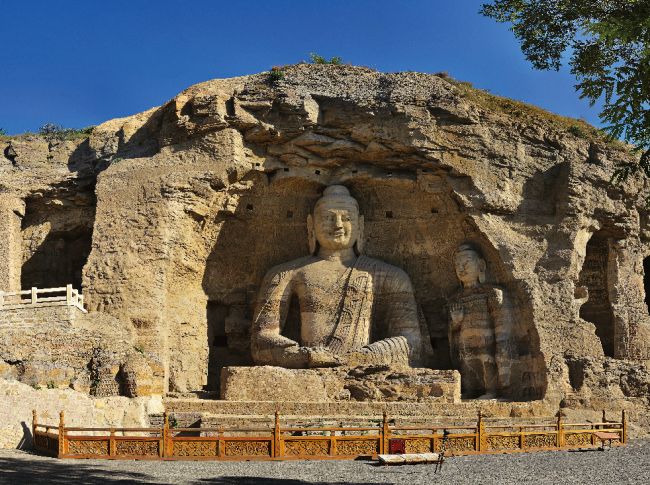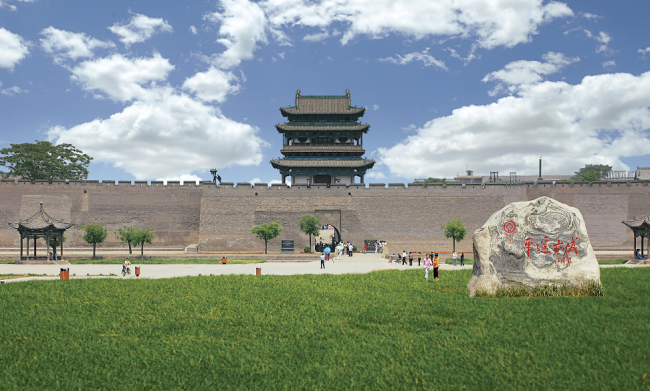World Heritage See Shanxi
“Ancient Chinese Civilization and Good Sceneray in Shanxi”。The World Heritage sites in Shanxi Province are attracting the world's attention with their unique charm. One old street, one historic district, one traditional building, just like a history book, a volume of archives, recording the vicissitudes of history, witnessing the development of history. If you are impressed by the open-air Buddha's smile in Yungang Grottoes, intoxicated by the original traditional taste of Pingyao Ancient City, attracted by the sacred Buddhist culture of Wutai Mountain, and conquered by the winding history of the Great Wall, come to Shanxi. Touch the vivid history with your eyes, listen to the sound of the years with your ears, and feel the truth, goodness and beauty of this charming land with your soul! Today, Xiaobian will take you to understand what are the World Heritage sites in Shanxi Province?
1.YungangGrottoes

Yungang Grottoes, one of the four major grottoes in China, are the pinnacle of Chinese Buddhist art. With a history of more than 1,500 years, the Grottoes represent the highest level of world sculpture art in the 5th century AD. Yungang Grottoes are likened to Roman stone carvings in the East by artists. The Grottoes are known as the world's three art treasure houses of stone carving together with the Ajanta Caves in India and the Bamiyan Grottoes in Afghanistan. With a carving area of more than 18,000 square meters, the Yungang Grottoes are comprised of 45 major caves, 209 affiliated caves, and more than 59,000 statues.
2.PingyaoAncientCity

Pingyao ancient city is one of the four best-preserved ancient cities in China and is on the list of the world's top 10 ancient walled cities selected by CNN, together with other famous historical buildings in the world such as Historic Fortified City of Carcassonne in France, York Castle in England, and Quebec City in Canada. As the birthplace of Shanxi merchants, Pingyao ancient city is also known as “China's Wall Street”. The ancient city today is also intertwined with modern art. The annually-held activities such as “Pingyao International Film Festival” and “Pingyao International Photography Festival” have become a glittering cultural symbol of Shanxi.
3.WutaiMountain

Located in Xinzhou City, Shanxi Province, Wutai Mountain is home to the largest Buddhist ancient building complex in East Asia and even in the whole world. It is known as one of the five holy places of Buddhism in the world and enjoys the reputation of “Buddhist Paradise”. Wutai Mountain integrates its natural features with Buddhist culture, perfectly embodying a concept of Chinese philosophy which is “harmony between humanity and nature”. With the vigorous protection by the emperors of the past dynasties and the hard work of Chinese and foreign monks and ordinary people, the uncommon ancient building complex, the rare group of Buddhist statues, and the unique Buddhist music have been well preserved, for which it is known as “Treasure House of Ancient Chinese Architecture Art”.
4.The Great Wall in Shanxi

The Shanxi section of the Great Wall is an important part of the Great Wall. With a total length of 1401.23 kilometers, it ranks third in length among all parts of the Great Wall, accounting for 9.74% of the remains of the Great Wall. Shanxi was a place of strategic importance in ancient times since it has some famous fortification passes along the Great Wall, including the famous “Three Outer Passes”—Piantou Pass, Ningwu Pass, and Yanmen Pass, and the well-known Pingxing Pass and Niangzi Pass. As one of the nine steepest and most important passes in China, Yanmen Pass is known as “China's First Pass” and has a complete military defense system, which is similar to the Hadrian's Wall in Britain.